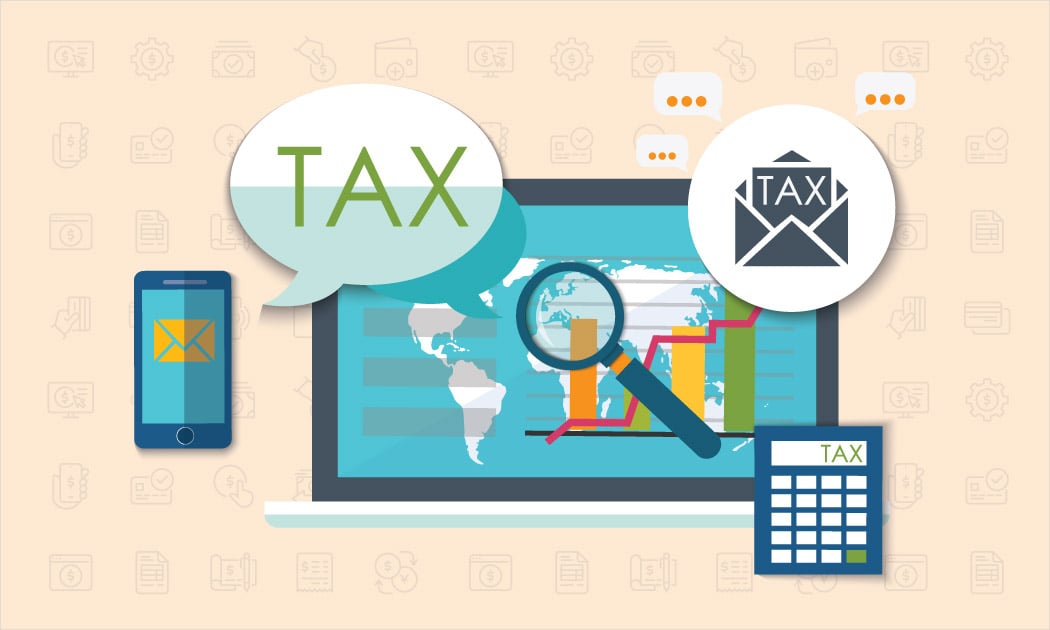The Payroll Blog
News, tips, and advice for small business owners
- Home
- Resources
- Payroll Blog
- What Are Estimated Quarterly Taxes?
What Are Estimated Quarterly Taxes?
Making estimated tax payments quarterly allows small business owners, one-person businesses, the self-employed or independent contractors to pay taxes as income is earned rather than submitting one large lump sum every year in April.

Regardless of the type of small business you have, the IRS requires you to pay quarterly estimated taxes if the business owes income tax of $1,000 or more. Estimating quarterly taxes is just that – an estimate. Quarterly installments are based on the revenue that a small business estimates that they will make based on earnings.
Should I make quarterly estimated tax payments?
The amount of federal income taxes that a small business owner or self-employed individual owes depends on several considerations: business location, legal structure, and type of business. Small business owners with employees also have to pay employment taxes and withhold certain portions of an employee’s paycheck.
If you’re a sole proprietor or you own a small business that doesn’t have any employees that you pay wages to, the IRS doesn’t mandate you to file quarterly forms, but it’s still a good idea to avoid having to pay a huge lump sum all at once. You’re still required to pay annual income tax returns on April 15 every year. Your return should include Profits and Losses of the business reported on tax form Schedule 1040-C. Additional information for the self-employed can be found in the IRS’ Self-Employed Individuals Tax Center. Note that you do have to file an income tax return if your net earnings from self-employment were $400 or more.
In addition to federal forms, you may also be required to file quarterly or periodic taxes based on your state. Small businesses, including sole proprietors and partners, are generally encouraged by the IRS to make estimated tax payments.
The IRS divides the tax year into four specific payment periods, with payments typically due April 15, June 15, September 15, and January 15. However, due to the 2020 Coronavirus pandemic, tax filing dates for first and second quarters of 2020 estimated tax payments have been extended to tax filers. Revised dates for estimated tax payments for the first and second quarter payments (April 15 and June 15) for 2020 will be due on July 15, 2020. Payments for the third quarter is still due September 15, 2020, and the fourth estimate quarter payments will be due January 15, 2021.
Calculating your quarterly estimated taxes
To calculate tax liability for your tax bill, estimate your annual gross income or the total in revenues that you received and then deduct expenses or other eligible deductions. As an example, if you anticipate an annual revenue of $100,000 and you deduct business expenses that total approximately $30,000, your taxable income is $70,000.
IRS form 1040-ES (Estimated Tax for Individuals) can help make those calculations and determine taxable income and estimated payments due. Once you do have an estimate for the amount of taxes you owe for the year, simply divide that number by four and submit quarterly payments by their due dates.
For sole proprietors, the self-employed, or independent contractors, self-employment tax can also be calculated for your estimated quarterly payments. (Use of self-employed tax calculator apps or charts are helpful). Self-employment tax rates on net income is 15.3% up to certain income level ($137,700 in 2020). For those earning more than $137,700, add another 2.9% to the tax rate of 15.3%. Those tax rates also include Social Security and Medicare tax.
What forms do I need to file estimated quarterly taxes?
Generally, a sole proprietor, a self-employed individual, or an employee who works for an employer that does not withhold taxes from their paycheck, needs to pay estimated quarterly income taxes. Rules are based on earnings, prior tax payment scenarios, and business types, so consult with your certified public accountant or with the IRS to avoid underpayment, late filing fees, or penalties and interest accrued on late or underpaid tax payments.
Small businesses or sole proprietors with varying levels of income can make estimated quarterly payments based on each quarter’s income. For this, you can use the Annualized ES Worksheet (Worksheet 2-9), which is similar to Form 1040-ES, although it breaks down figures to a quarterly rather than annual estimates.
A small business that has employees needs to file quarterly estimated taxes using Form 941. This form is used to report income taxes, Social Security tax, and Medicare tax withheld from employees’ paychecks, as well as the employer’s portion of Medicare or Social Security taxes.
*Note: As of March 18, 2020 and due to COVID-19, the Families First Coronavirus Response Act (FFCRA) “provides small and midsize employers refundable tax credits that reimburse them, dollar for dollar, for the cost of providing paid sick and family leave wages to their employees for leave related to COVID-19. Credits for qualified sick and family leave wages will be claimed on your employment tax return (Form 941, Form 943, Form 944, or Form CT-1).” If you are a SurePayroll customer, we have these earnings in our product to make payroll easier.
In addition, the CARES Act also allows employers to defer the deposit and payment of the employer share of Social Security taxes (Tier 1 employer tax for railroad employers). Deferred amounts will be reported on employment tax return (Form 941, Form 943, Form 944, or Form CT-1). For additional information refer to IRS.gov.
What happens if I miss a quarterly estimated tax payment?
The pay-as-you-go benefits of making estimated quarterly taxes not only diminishes interest but can help reduce the risk of receiving an estimated tax penalty for late or missed payments. Be aware that missing a quarterly estimated tax payment can accrue cumulative penalties.
Tax laws can be confusing, but missing tax deadlines immediately starts the accrual of penalties and interest. Assess your estimated quarterly taxes due and pay them as soon as possible.
What if I overpay estimated taxes?
If you happen to overpay your quarterly estimated tax for one or more quarters, you may have paid enough to be able to skip the next estimated tax payment. For example, if your first quarter estimated tax payment covers both the first and second quarter, the IRS won’t penalize you for not sending in your second-quarter payment. It’s better to overpay than underpay.
It can be challenging for a small business owner to estimate annual revenue, and swings in revenue can be erratic. You can always recalculate your estimated taxes in the middle of your year to make adjustments.
Take advantage of software options to help you determine estimated quarterly taxes. Small business accounting software is available, as are online payroll services. The Small Business Administration also provides resources and guidance for small business owners. Small business accounting tools input with adequate and accurate financial information are helpful in producing reports that can help with quarterly estimated tax prep. Bottom line: perform due diligence and pay your taxes on time to avoid late fees and penalties.
Related Blog Posts
View Our Plans and Pricing
Small Business Is Our Business.
This website contains articles posted for informational and educational value. SurePayroll is not responsible for information contained within any of these materials. Any opinions expressed within materials are not necessarily the opinion of, or supported by, SurePayroll. The information in these materials should not be considered legal or accounting advice, and it should not substitute for legal, accounting, and other professional advice where the facts and circumstances warrant. If you require legal or accounting advice or need other professional assistance, you should always consult your licensed attorney, accountant or other tax professional to discuss your particular facts, circumstances and business needs.


